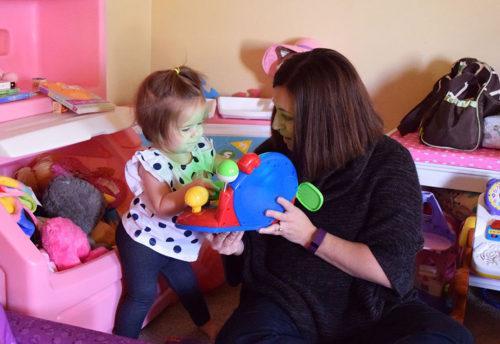
Play, Autism, and The PLAY Project (Dr. Rick’s Blog)
Richard Solomon, MD
June 2016 • Volume 01
Recently, there was a New York Times opinion piece by Paul Tough entitled To Help Children, Coach Their Parents about research on young children in Jamaica who were at high risk for developmental delays and behavioral problems. In order to help the children, what did they coach the parents to do? Promote more educational activities? Nope. Use techniques to help children improve their behavior? Guess again. Play more? Yes! One arm of the research study coached parents to enjoy time with their child in fun and interactive ways, which led to long-term positive impacts on I.Q., less aggressive behavior and better self-control.
In her recent, best-selling book, The Importance of Being Little, Erica Christakis, PhD called for a return to playfulness as the best way to help preschool children educationally. She referenced the PLAY Project’s early autism intervention as an example of how play can help children with Autism Spectrum Disorders (ASD).
How can we help children with autism learn to play with others? The brains of children with autism have disorganized, under-connected, neuronal networks. It’s like having a loose net of brain cells that lets the complexity of the world fall through and drives these children’s repetitive, stereotyped, and obsessive interests which are the opposite of play. It explains their lack of social abilities, even with their own families! I can’t tell you how many families have told me how sad it is to not be able to connect with their own child. When it comes to their development, children with ASD are their own worst enemies — seeking isolation and sameness. They do not play well with others.
The saving grace is something called ‘neuronal plasticity’, or the ability of the brain to form better neuronal connections through experience. What’s even more encouraging, Jaak Panksepp PhD, the brain scientist famous for tickling rats, assures us that play is one of the survival emotions; it is hard wired into every mammalian brain. We just have to find our way to the neuronal structures of play within the brain of children with ASD. And intervening early means doing this before the neuronal structures are already formed.
It can be done. Children with autism — like all children — have so much potential!
After 25 years of working with children on the spectrum and 15 years of being the medical director of The PLAY Project, I can testify to the power of coaching families to use the power of play and locate the play centers deep in the brain, especially for the youngest children with ASD. Recently we began to introduce our methods into schools as well.
The PLAY Project is one of the few, proven national programs that uses play as the primary intervention for children with ASD.
Through coaching families (and teachers), we not only help the adults connect socially with the child through play, but we help the child’s brain make connections that lead to improved development, better social interaction, and less autism symptoms. And we have the research to prove it.
I joke (I joke a lot) that we’re serious about play! Sadly, one of the things we’ve discovered is that many of our families have almost forgotten how to play, and many of our preschools play less and less to focus on gaining pre-academic skills. It is the goal of the PLAY Project to re-introduce play to families who have a child with autism and to school personnel who want to educate children with autism.
Forgetting how to play is not just a problem limited to the families of children with autism. When was the last time you flew a kite? As Peter Gray, in his book Freedom to Learn, says, we are suffering nationally from a ‘Play Deficit Disorder’ with loss of play spaces, the overuse of screens and media, the over focus on academics and testing, and the over-scheduling our children. As Anthony T. DeBenedet, MD urges in his book The Art of Roughhousing, it’s time to get rough, tough, and silly with all of our children.
This is the first in a series of planned blog posts. In future posts I will share the inside story of how we help families in their homes and teachers in their schools become great players with children who are on the autism spectrum. I will also use autism spectrum disorders as a lens for looking at brain science, societal trends, and human nature itself. But now I’m going kite flying with my grandchildren. Stay tuned and don’t forget to PLAY!
For more information, you may enjoy reading my new book titled Autism: The Potential Within.
To learn more about the PLAY Project autism intervention, click here or visit the PLAY Project website.





Leave a Reply